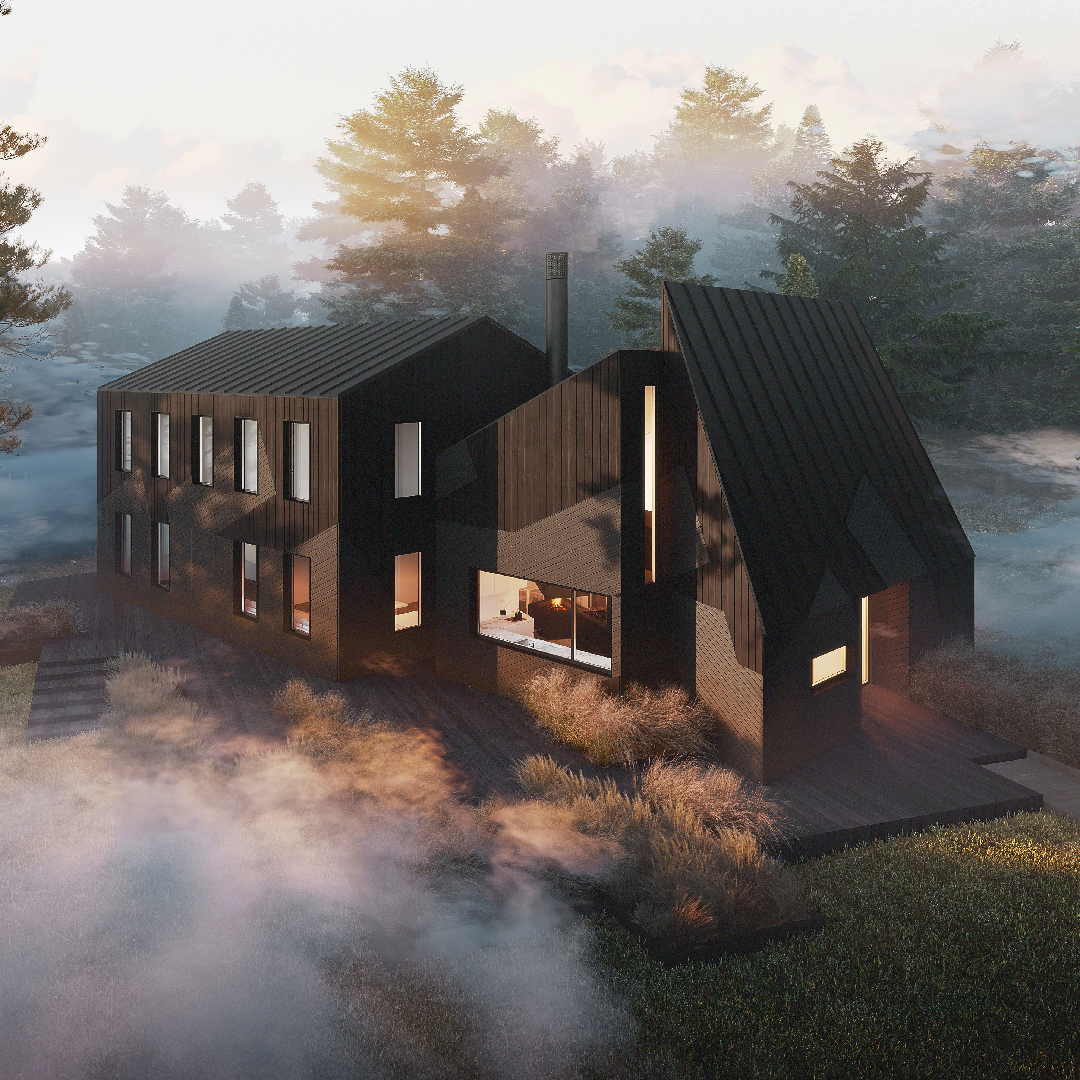Gold Winner of the International Architecture & Design Awards 2023
PF House
Architecture
Private Residence Medium
Concept / Professional Category


Architect / Designer:
Adam Dayem
Studio:
actual / office
Design Team:
Adam Dayem: Design and project supervision
Nick Sideropoulos: Project assistant
iddqd studio: Visualization
Country:
United States
Projected Farm (PF) House is a reinterpretation of a house in the country. The project consists of three main elements: renovation of an 1813 post and beam farmhouse, full replacement of a 1960s wood frame kitchen wing, and a new landscape design tying the historical farmhouse and kitchen wing together. It is designed for a family of four with strong professional and cultural ties to New York City who desire a life lived primarily in the country.
As an idea, the house in the country is typically understood in relation to life in the city. Rural qualities are understood in opposition to urban qualities: space vs. density, nature vs. culture, provincialism vs. sophistication, informality vs. formality, etc. In this regard, the two halves of the existing house – original farmhouse and kitchen addition – represent different ideas of a house in the country. The original 1813 farmhouse is a formal, symmetrical composition. It compartmentalizes private and public spaces in closed-off rooms. It represents a type of Victorian formality that points away from the country toward the city. It brings sensibilities of the city to the country. The 1960s kitchen addition represents a different attitude by breaking symmetry of the house in both in plan and elevation. It moves the main entrance from a formal space (living room and parlor) to an informal space (kitchen). This informality represents an idea of country that does not conform or relate to the city, it is more inward looking.
The new proposal is intentionally ambiguous in terms of being of the city or of the country, which reflects the client’s desire to be in both worlds. The 1960s kitchen addition has been replaced by a new structure organized on an oblique grid. The gabled mass is rotated 90 degrees from a typical relation to street, its roof ridge is broken and placed off-center, part of its roof is ‘too steep’, its new entrance is ‘too low’, and its lofted interior space is divided by floating cabinetry and fireplace elements rather walls. All these characteristics purposefully play against expectations of what a house in the country should be, but without completely erasing the familiarity of its figure.
The two wings of the house are surrounded by a new landscape design composed of wood decks and planters. Shapes of these landscape elements are designed to be projected from horizontal (plan) up to vertical (elevation). Inscriptions of these projections on the building’s facades are realized in different textures of blackened wood siding installed at different angles. Resulting abstract shapes on the building become a subtle camouflage that interrupts its domestic figuration. Visual ambiguity between domestic figures and abstract figures creates a sense that the house is both of the country and alien to it. This aesthetic is not intended to place the country in opposition to the city, but to introduce a strangeness from elsewhere that works against a traditional idea of the house in the country.
actual / office
In a name, actual / office frames an attitude toward the practice of architecture. The freedom to actualize hidden potentials, bringing the previously unimagined into focus, is alternately separated from, and simultaneous to, the weight of responsibility and authority. The studio purposefully drifts between unencumbered speculations and tough realities. a/o takes on a wide variety of work including residential, exhibit design, furniture design, and research projects. a/o has won awards for theoretical research and architectural projects including Second Place in the American Architects 2017 Building of the Year Competition and Chicago Museum of Architecture and Design 2019 American Architecture Award.

